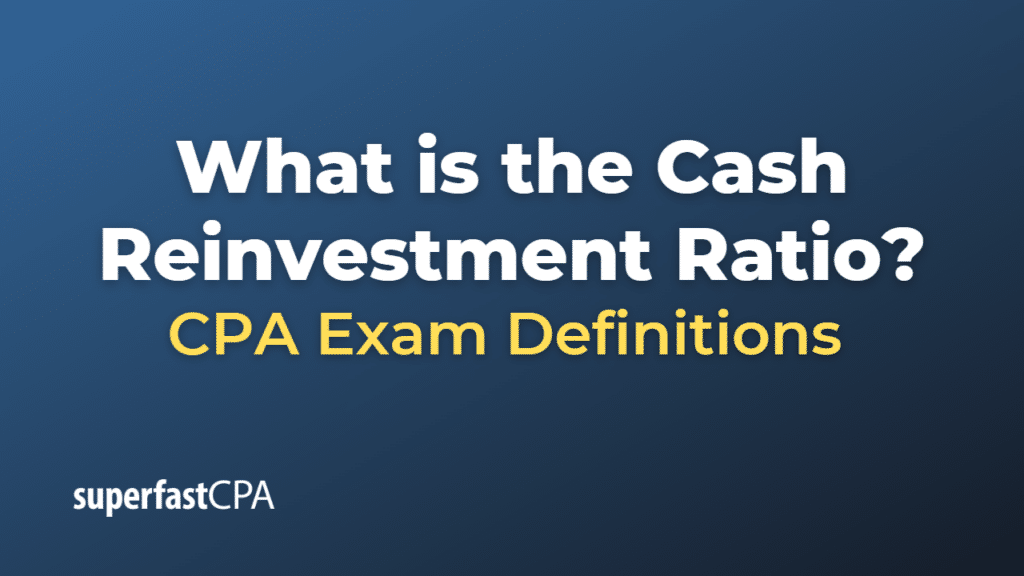Cash Reinvestment Ratio
The cash reinvestment ratio, also known as the plowback ratio or retention ratio, is a financial metric that measures the proportion of a company’s earnings that are reinvested back into the business rather than being distributed to shareholders as dividends. It indicates the company’s commitment to investing in growth opportunities, such as expanding operations, developing new products, or acquiring other businesses.
The cash reinvestment ratio can be calculated using the following formula:
\(\text{Cash Reinvestment Ratio} = 1 – (\frac{\text{Dividends per Share}}{\text{Earnings per Share}}) \)
Alternatively, it can be calculated as:
\(\text{Current Ratio} = \frac{\text{Retained Earnings}}{\text{Net Income}} \)
A higher cash reinvestment ratio indicates that a company is retaining a larger portion of its earnings to invest in growth opportunities, while a lower ratio suggests that a larger portion of earnings is being distributed to shareholders as dividends. Companies with high cash reinvestment ratios may be more focused on long-term growth, while those with lower ratios might prioritize shareholder returns in the short term.
Example of the Cash Reinvestment Ratio
Let’s say we have two companies, Company A and Company B, and we want to compare their cash reinvestment ratios. Here is the financial data for each company:
Company A:
- Net Income: $1,000,000
- Dividends Paid: $200,000
Company B:
- Net Income: $800,000
- Dividends Paid: $100,000
First, we need to calculate the retained earnings for each company:
Company A:
Retained Earnings = Net Income – Dividends Paid = $1,000,000 – $200,000 = $800,000
Company B:
Retained Earnings = Net Income – Dividends Paid = $800,000 – $100,000 = $700,000
Next, we calculate the cash reinvestment ratio using the formula (Retained Earnings / Net Income):
Company A:
Cash Reinvestment Ratio = $800,000 / $1,000,000 = 0.8 or 80%
Company B:
Cash Reinvestment Ratio = $700,000 / $800,000 = 0.875 or 87.5%
Based on these calculations, Company B has a higher cash reinvestment ratio (87.5%) compared to Company A (80%). This indicates that Company B is retaining and reinvesting a larger portion of its earnings back into the business for growth opportunities, while Company A is distributing a higher percentage of its earnings to shareholders as dividends.













